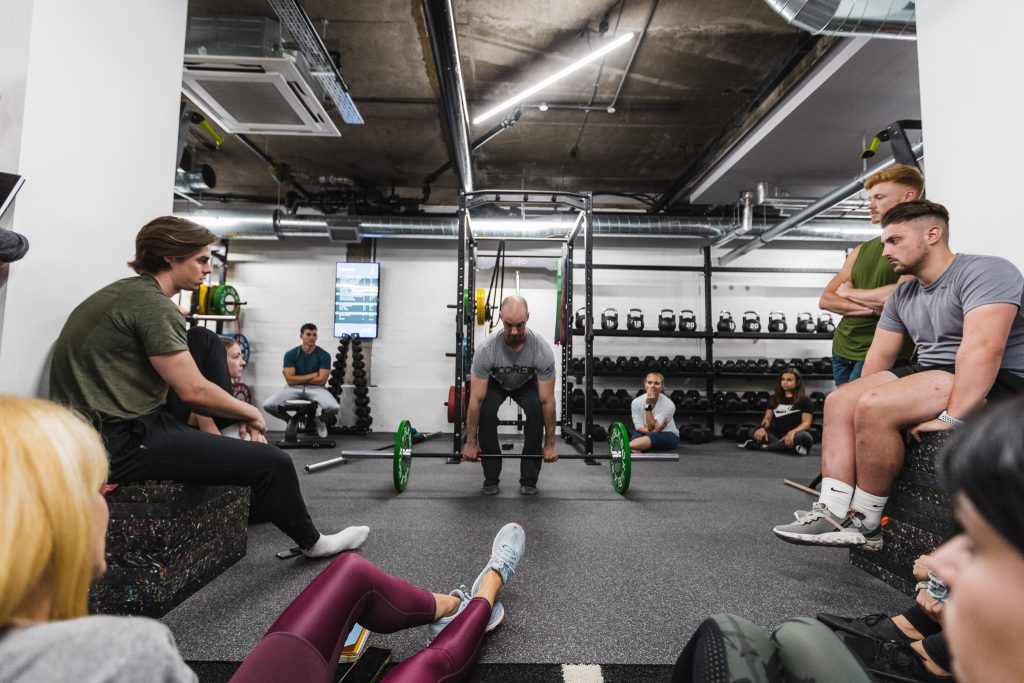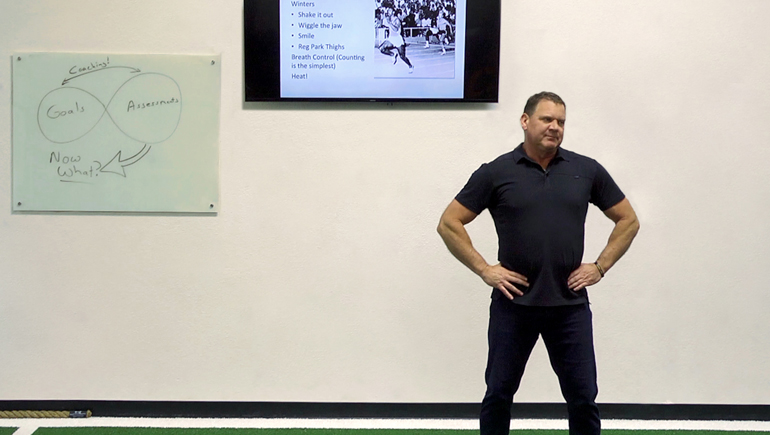Granted I’m biased, but I truly feel making a concerted effort to get strong(er) in the gym is the way to go for most people.
Strength is the base for pretty much everything; it’s the “thing” that most all other attributes we strive to improve upon is tethered to
Speed, power, endurance, Laser Tag world dominance, literally, pretty much everything performance based has its “roots” in improved strength. What’s more, there’s also a significant interplay between strength and improved body composition (strong people typically have more muscle), not to mention a high correlation of less risk of getting injured.1
I’m not saying strength is the end-all-be-all-answer-to-everything-and-you’re-totally-going-to-be-the-hero-of-your-recreational-slowpitch-softball-team-and-have-the-stamina-of-37-Spartan-Warriors-in-bed…
…but it’s close, and pretty damn important.

But How Can You Tell If You’re Getting Strong(er)?
There’s a lot of nuance as to HOW to get stronger (HINT: lift heavy things consistently) in addition to HOW to measure it.
However, for the sake of brevity I made this handy Cliff Notes graphic to hammer home the key components at play:

The left-side of the graphic is fairly self-explanatory, but in case some people reading are looking at this as if it were written in Elvish let me elaborate.
If you make a consciouses effort to perform either more reps, sets (or both) at a given load…you’re winning.
Example
Front Squat (225 lb)
Week 1: 3 sets of 5 reps = 15 total reps at a total tonnage (volume) of 3,375 lb lifted.
You know you’re getting stronger if you stay at the same weight and you perform either an additional set or more repetition(s).
This is also called PROGRESSIVE OVERLOAD.
So, Week #2 could go as follows:
3 sets of 6 reps = 18 reps completed at a total tonnage (volume) of 4,050 lb lifted.
4 sets of 5 reps = 20 reps completed at a total tonnage (volume) of 4,500 lb lifted.
Likewise, if you add more weight to the bar and lift that once, twice, eleven times, well, the secret’s out…you’re stronger.
Hell, I may as well just hand you the Sword of Grayskull and give you a killer bowl cut at this point.
To simplify things further: You’re going to get stronger if you DO MORE WORK over the course of several weeks, months, years.
To Note: Beginners will have a much easier time with this than advanced lifters. Most beginners can just gaze at a dumbbell and they’re going to get stronger.2 The first year or two of training can easily be boiled down to what’s described above; linear periodization at its core.
The more time under the bar someone has, however, and the stronger they are, the more “fluctuations” in training parameters have to be taken into consideration.
There’s going to be more peaks and valleys in training stress/load throughout the year in order to improve strength, as well as more meticulous attention to things like bar speed, ability to recover, and what accessory work needs to be done to address weak points in technique.
Lets just say more things need to be taken into consideration to take someone from a 400 lbs. deadlift to 500 compared to someone going from 200 to 300 lbs.
The cool thing, though…once you ARE strong (whatever that means to you), while the work to get there is no walk in the park, it doesn’t require nearly as much effort to maintain it. Maximal strength, for example, has a “residual” duration of 30 (+/- 5) days.
Meaning, so long as you remind the body (to be more specific, the central nervous system) that it can do something, you don’t have to do a lot of that something to maintain it.

To summarize the left side of my handy graphic above:
“What gets measured gets managed.”
That being said, where many people seem to miss the mark is that, where strength is the main goal, it isn’t just about always doing more reps, sets, and/or adding more weight to the barbell.
1. Do More Work in Less Time
This is density training 101.
Not only is this indicative of improved strength, but work capacity as well.
2. Get Submax Rep PRs
Dan John is known for a bevy of remarkable quotes.
“The goal, is to keep the goal the goal,” is a popular one.
One of my favorite of his, though, is this:
“Easy training is good training.”

There’s a time a place for training to suck and to make you come close to shitting your spleen.
Here’s a hint: That time is not every…single…workout.
It’s music to my ears when I client says “your pecs are looking awfully pecy today, Tony.” But it’s a goddamn symphonic masterpiece when a clients says “I could have done more” at the end of a session.
This doesn’t imply that they didn’t work hard or that the training session wasn’t challenging (trust me, it was). Rather, what it implies is that they got their work in and will likely show up for their next session feeling refreshed and ready to go.
It’s hard to make strides in strength when you constantly feel like you got run over by a Mack truck.
In short: Make your 3-rep Max your 5-rep Max. Chances are your 1-rep max will improve too. You don’t always have to pursue ABSOLUTE strength in order to get stronger.
3. “Feel” of a Set
I find a lot of people are too quick to add weight to the bar at the expense of their technique.
Sure, you may complete all desired repetitions of a given exercise, but if my eyes start bleeding watching it or I could watch an entire episode of The Mandalorian before you complete five repetitions…
…STAY PUT.
Do not add more weight.
Don’t you do it.3
Making the same load FEEL easier is a sign of progress and an often under-utilized metric.
But seriously, how cute is Baby Yoda?



